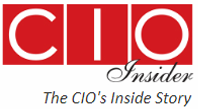
The Deal or No Deal Scenario for Setting Up a Self-Regulatory Body for Social Media

Striking a deal between the Indian government and US tech giants is a living example of what being frenemies means. Be it complying with the new IT rules, violating foreign exchange law, or the recent data protection and privacy bill that the government had withdrawn. The government is stern towards US tech giants as it strives to create a safe haven for citizens to browse and use social media platforms. It is bent on straightening up issues such as the spread of misleading information, as well as prohibiting monopolistic behavior.
Since the issue revolves around misleading content oftentimes, offensive information, or promotion of negative agendas, social media companies and the Internet and Mobile Association of India (IAMAI) came up with the idea of forming a self-regulatory body. Facebook and Twitter are in for the deal, but Google and Snap have other opinions. Let’s look into the differences of opinion between the opposing parties, the ones on the agreement and the government’s side of it.
Global and domestic IT policy and business advisory groups have harshly criticized the plan for a government-appointed GAC (Grievance Appellate Committee). Major US lobby groups, including the US-India Business Council (USIBC) and US-India Strategic Partnership Forum (USISPF), which include companies like Facebook and Twitter among their members, wrote letters to MEITY earlier this month to express concern about how a panel of this nature might function independently if the government controls its formation.
Dodging Government’s GAC and Falling into Consensus Confusion
In June, the Indian government pitched the idea of appointing a government panel to hear user complaints about content moderation decisions. It also said another concept of forming a self-regulatory body given the industry is willing.
US tech giants’ industry lobby groups think that a government-appointed review panel raises questions about how it might function independently if New Delhi chooses who sits on it
However, Google and Snap are against the idea of such a body as they fear that this system could paralyze their ability to legally challenge the final content moderation decisions of a self-governing body. Adding more to their woes is the difference in moderation policies of different platforms.
At this point, Snap and Google’s fear is quite understandable, especially since the current structure of the self-regulatory body already states that the decisions passed by the body will be binding in nature. They Believe that the scope for challenging such a binding body is much lower compared to the orders passed by the GAC.
On another page, while having senior executives of all social media companies in the self-regulatory body could work out for reaching a consensus, it is also possible to end up being a ‘too many cooks spoil the broth’ scenario. Disagreements are likely to swing by during their discussions. Different companies have their receptive content moderation guidelines. What is acceptable for one company may not fall true for another due to their different community guidelines. This is the real challenge, the difficulty in reaching a general agreement on content moderation issues for all platforms.
How Does Failing to Reach a Consensus Affect Companies?
Not reaching a consensus for social media companies means reducing their bargaining power to make the government allow for a self-regulatory body rather than the GAC.
Industry representatives that include significant American tech companies, such as the US-India Business Council and the Asia Internet Coalition, opposed the creation of these government-appointed panels as they questioned their impact on independence. They pointed out the manner deliberations about the self-regulatory body have happened thus far, terming it as ‘disjointed’ in nature.
It was observed that many IAMAI members, as well as social media companies, were unaware of the steps taken to formalize the self-regulatory body. This is because WhatsApp, created for the purpose of circulating a document, did not include most members of the IAMAI.
India’s Tensions Over Social Media Content
Although there have been instances of cooperation, self-regulatory bodies controlling social media content are uncommon. Big tech companies in New Zealand have agreed to a code of conduct meant to lessen misleading information online.
In India, disagreements over social media material have been particularly contentious. Social media firms frequently get takedown orders from the authorities or proactively remove content. For instance, Google's YouTube banned 1.2 million films that broke its rules in the first three months of this year, the most of any nation in the world.
The Indian government is worried that users who disagree with orders to remove their information will have no legal remedy other than to file a lawsuit since there is no suitable infrastructure in place for them to do so.
Twitter received criticism after blocking the accounts of prominent Indians, including politicians, citing a policy breach. Last year, Twitter also got into a fight with the Indian government over its refusal to completely abide by requests to remove accounts that the government claimed promoted misinformation.
An early version of the proposal for the self-regulatory organization stated that the panel would consist of six other people, including some senior executives at social media businesses, a retired judge, or an experienced figure from the field of technology as chairwoman.
US tech giants’ industry lobby groups think that a government-appointed review panel raises questions about how it might function independently if New Delhi chooses who sits on it.
Snap and ShareChat also voiced concern about a self-regulatory system at the meeting, saying the matter requires much more consultation, including with civil society.



